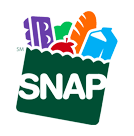Last Updated: March 17, 2025
Changes from previous version:
- Original document incorporating prior version of Hearing Aid Compatibility Disclosures
- Added information on Accessibility of Services and Devices
- Added section on Telecommunications Relay Service
This policy provides information about how individuals with disabilities can use Boomerang Wireless, LLC d/b/a enTouch Wireless’s (enTouch Wireless) wireless services. Hearing, visual, or speech impaired individuals interested in applying for a specially equipped enTouch Wireless wireless device must contact enTouch Wireless and specify their needs to a representative. enTouch Wireless will attempt to enTouch such customers in obtaining and making available a device that meets their needs.
Hearing Aid Compatibility
The Federal Communications Commission (FCC) has adopted specific hearing-aid compatibility rules for cell phones to ensure that manufacturers develop phones that are compatible with hearing aid devices and enTouch hearing device users in finding those phones. Specifically, the FCC relies on standards developed by the American National Standards Institute (ANSI) to help consumers identify which cell phones are compatible with hearing aids. Under the 2019 ANSI Standard, a phone is hearing aid compatible if it is labeled as such. The 2011 ANSI Standard uses a rating system: compatibility with telecoil hearing aids is based on a ‘T’ rating (T1 through T4), while compatibility with microphone hearing aids is based on an ‘M’ rating (M1 through M4).
The higher the M or T rating assigned to a phone, the less interference there is to hearing aid users—phones that receive a rating of 3 or 4 are deemed to be hearing aid compatible.
Today, most cell phones are designed to be compatible with hearing aids under the ANSI Standards, and therefore reduce or completely eliminate interference that some hearing aid device users may experience when using a cell phone. Interference occurs when the electronics within the hearing aid device pick up and demodulate radio frequency (RF) or electromagnetic interference (EMI) emitted by the cell phone or other sources, which may result in a buzzing, humming, or whining noise for users with hearing aid devices while using certain cell phones. In addition to the hearing aid compatibility of the device, the amount of interference experienced will vary depending on the design of the hearing aid.
While the ANSI Standards are a useful tool for consumers when choosing the right cell phone, they do not guarantee that a phone will not cause interference with a particular hearing aid. Additionally, while phones have been tested and rated for use with hearing aids for some of the wireless technologies that they use, there may be some newer wireless technologies used in phones that have not yet been tested for use with hearing aids. If you use a hearing aid device, it is important that you try the different features of your phone thoroughly and in different locations, using your hearing aid, to determine if you hear any interfering noise. Your hearing device manufacturer or hearing health professional can help you with questions about your hearing device. You can also consult the manufacturer of your phone for more information on hearing aid compatibility. Additionally, if your cell phone is not working with your hearing aid device, please contact enTouch Wireless Customer Service using the contact information identified below or your wireless phone retailer about phone return or exchange policies. enTouch Wireless’s phone and exchange policies are set forth in the Terms and Conditions.
enTouch Wireless ensures that a certain portion of the wireless phones it offers are hearing aid compatible under the ANSI standards. enTouch Wireless currently offers the following hearing aid compatible wireless phones:
| Make |
HAC Status |
M Rating |
T Rating |
FCC ID |
Level of Functionality |
ANSI Standard |
| Alcatel 4044C |
Hearing Aid Compatible |
4 |
4 |
2ACCJN012 |
Flip |
2019 |
| Alcatel 4052R |
Hearing Aid Compatible |
4 |
4 |
2ACCJN032 |
Flip |
2019 |
| Alcatel 5002 |
Hearing Aid Compatible |
4 |
3 |
2ACCJH118, 2ACCJH120, 2ACCJH124 |
Smartphone |
2019 |
| Alcatel 5044C |
Hearing Aid Compatible |
4 |
3 |
2ACCJB079, 2ACCJH062, 2ACCJH063, 2ACCJB090 |
Smartphone |
2019 |
| Alcatel A501 (TCL A1) |
Hearing Aid Compatible |
4 |
3 |
2ACCJH099 |
Smartphone |
2019 |
| Alcatel A502 (TCL LX) |
Hearing Aid Compatible |
4 |
4 |
2ACCJH086 |
Smartphone |
2019 |
| ALCATEL Axel |
Hearing Aid Compatible |
4 |
3 |
2ACCJH129 |
Smartphone |
2019 |
| Alcatel Tetra 5021C |
Hearing Aid Compatible |
4 |
3 |
2ACCJH087 |
Smartphone |
2019 |
| ARTIA P600 |
Hearing Aid Compatible |
4 |
3 |
2ALZM-P600 |
Smartphone |
2019 |
| ATT VISTA |
Hearing Aid Compatible |
4 |
4 |
2APXW-WTATTRW2 |
Smartphone |
2019 |
| Vison Plus |
Hearing Aid Compatible |
4 |
4 |
2A28USL100EA |
Smartphone |
2019 |
| Apple iPhone 7 |
Hearing Aid Compatible |
3 |
4 |
BCG-E3091A, BCG-E3085A |
Smartphone |
2019 |
| Apple iPhone 8 |
Hearing Aid Compatible |
3 |
4 |
BCG-E3159A, BCG-E3172A |
Smartphone |
2019 |
| Apple iPhone 8 Plus |
Hearing Aid Compatible |
3 |
4 |
BCG-E3160A, BCG-E3174A |
Smartphone |
2019 |
| Blu View 3 |
Hearing Aid Compatible |
3 |
3 |
YHLBLUB1550VL |
Smartphone |
2019 |
| Blu C5L |
Hearing Aid Compatible |
3 |
4 |
YHLBLUC5L |
Smartphone |
2019 |
| Blu View 4 |
Hearing Aid Compatible |
4 |
3 |
YHLBLUB135DL |
Smartphone |
2019 |
| CALYPSO 2 |
Hearing Aid Compatible |
4 |
4 |
XD6U319AA |
Smartphone |
2019 |
| CALYPSO 3 |
Hearing Aid Compatible |
4 |
4 |
XD6U328AA |
Smartphone |
2019 |
| CALYPSO 4 |
Hearing Aid Compatible |
4 |
4 |
XD6U380AA |
Smartphone |
2019 |
| FOXX A551 |
Hearing Aid Compatible |
3 |
3 |
2AQRM-A551 |
Smartphone |
2019 |
| Fusion 5G |
Hearing Aid Compatible |
4 |
3 |
RYQEA211001 |
Smartphone |
2019 |
| Fusion Z |
Hearing Aid Compatible |
3 |
3 |
2AVD3V340U, 2AVD3V341U |
Smartphone |
2019 |
| HTC U11 |
Hearing Aid Compatible |
4 |
3 |
NM82PZC100, NM82PZC500 |
Smartphone |
2019 |
| Icon 2 |
Hearing Aid Compatible |
4 |
4 |
XD6U325AC |
Smartphone |
2019 |
| Icon 3 |
Hearing Aid Compatible |
4 |
3 |
RYQEA211002 |
Smartphone |
2019 |
| LG G4 |
Hearing Aid Compatible |
3 |
3 |
ZNFUS991, ZNFLS991, ZNFVS986 |
Smartphone |
2019 |
| LG K10 |
Hearing Aid Compatible |
3 |
3 |
ZNFX410AS, ZNFX410CS |
Smartphone |
2019 |
| LG K30 |
Hearing Aid Compatible |
3 |
3 |
ZNFX410PM |
Smartphone |
2019 |
| LG Stylo 2 Plus |
Hearing Aid Compatible |
3 |
4 |
ZNFK550BN, ZNFK557,ZNFK550BN |
Smartphone |
2019 |
| LG Stylo 4 Plus |
Hearing Aid Compatible |
4 |
3 |
ZNFQ710AL |
Smartphone |
2019 |
| Lush MINT |
Hearing Aid Compatible |
4 |
4 |
2AQ4GMS5414G |
Smartphone |
2019 |
| Maze Speed |
Hearing Aid Compatible |
4 |
4 |
2AL40-SPEED |
Smartphone |
2019 |
| MAZE SPEED |
Hearing Aid Compatible |
4 |
4 |
2AQ4G-MS5514G |
Smartphone |
2019 |
| Motorola E5 |
Hearing Aid Compatible |
4 |
3 |
IHDT56XF2, IHDT56XF4, IHDT56XF5, IHDT56XF6 |
Smartphone |
2019 |
| Motorola G Play |
Hearing Aid Compatible |
3 |
3 |
HDT6ZP6 |
Smartphone |
2019 |
| Motorola G Pure |
Hearing Aid Compatible |
3 |
3 |
IHDT56ZX2, IHDT56ZX1 |
Smartphone |
2019 |
| MOTOROLA GPOWER |
Hearing Aid Compatible |
3 |
3 |
IHDT56AU5 |
Smartphone |
2019 |
| MOTOROLA G STYLUS |
Hearing Aid Compatible |
3 |
3 |
IHDT56AQ4 |
Smartphone |
2019 |
| OVATION U705AC |
Hearing Aid Compatible |
4 |
4 |
XD6U705AA |
Smartphone |
2019 |
| NOKIA C100 |
Hearing Aid Compatible |
4 |
3 |
2AJOTTA-1520, 2AJOTTA-1484 |
Smartphone |
2019 |
| NOKIA C110 |
Hearing Aid Compatible |
3 |
4 |
2AJOTTA-1560 |
Smartphone |
2019 |
| NOKIA C200 |
Hearing Aid Compatible |
3 |
3 |
2AJOTTA-1510 |
Smartphone |
2019 |
| NOKIA C300 |
Hearing Aid Compatible |
3 |
3 |
2AJOTTA-1515 |
Smartphone |
2019 |
| RADIANT COREU304 |
Hearing Aid Compatible |
4 |
4 |
XD6U304AA |
Smartphone |
2019 |
| RADIANT MAX |
Hearing Aid Compatible |
4 |
4 |
XD6U705AA |
Smartphone |
2019 |
| Samsung Galaxy A10 |
Hearing Aid Compatible |
3 |
4 |
A3LSMA105M |
Smartphone |
2019 |
| Samsung Galaxy S9 |
Hearing Aid Compatible |
4 |
3 |
A3LSMG960U, A3LSMG960F, A3LSMG960KOR, A3LSMG9600 |
Smartphone |
2019 |
| Samsung Galaxy S9 Plus |
Hearing Aid Compatible |
4 |
3 |
A3LSMG965U, A3LSMG965F, A3LSMG965KOR, A3LSMG9650 |
Smartphone |
2019 |
| Samsung Galaxy A13 |
Hearing Aid Compatible |
3 |
3 |
A3LSMA135U |
Smartphone |
2019 |
| Samsung Galaxy A02 |
Hearing Aid Compatible |
3 |
3 |
ZCASMA025U, ZCASMA025M, ZCASMA025V |
Smartphone |
2019 |
| Samsung Galaxy Grand Prime |
Hearing Aid Compatible |
3 |
3 |
A3LSMG530AZ, A3LSMG530T, A3LSMG531H |
Smartphone |
2019 |
| Samsung Galaxy J7 |
Hearing Aid Compatible |
3 |
4 |
A3LSMJ700F, A3LSMJ700H, A3LSMJ700M, A3LSMJ700T |
Smartphone |
2019 |
| Samsung Galaxy S7 |
Hearing Aid Compatible |
4 |
3 |
A3LSMG930US, A3LSMG930W8, A3LSMG930F |
Smartphone |
2019 |
| Samsung On5 |
Hearing Aid Compatible |
3 |
3 |
A3LSMG550FY, A3LSMG550T |
Smartphone |
2019 |
| SOHO Style 5.5 |
Hearing Aid Compatible |
4 |
4 |
2AQ4G-SSB554R |
Smartphone |
2019 |
| TCL 30Z |
Hearing Aid Compatible |
4 |
3 |
2ACCJH159, 2ACCJH162, 2ACCJH152 |
Smartphone |
2019 |
| TCL A3X |
Hearing Aid Compatible |
4 |
3 |
2ACCJH132 |
Smartphone |
2019 |
| TCL A509 |
Hearing Aid Compatible |
3 |
3 |
2ACCJH131 |
Smartphone |
2019 |
| TCL Ion X |
Hearing Aid Compatible |
3 |
3 |
2ACCJH167 |
Smartphone |
2019 |
| TCL Ion V |
Hearing Aid Compatible |
3 |
3 |
2ACCJH167 |
Smartphone |
2019 |
| True Slim 5.5 |
Hearing Aid Compatible |
3 |
4 |
2AL4OSSB-508 |
Smartphone |
2019 |
enTouch Wireless currently offers the following additional phones, which are not hearing aid compatible:
| Make |
HAC Status |
FCC ID |
Level of Functionality |
| SKY A63MAX |
Not Hearing Aid Compatible |
2ABOSSKYELITEA63MX |
Smartphone |
| SKY ELITE 6MAX |
Not Hearing Aid Compatible |
2ABOSSKY6MX |
Smartphone |
| SKY ELITE 6PRO |
Not Hearing Aid Compatible |
2ABOSSKY6PRO |
Smartphone |
| SKY FLIPMAX |
Not Hearing Aid Compatible |
2ABOSSKYFLIP2 |
Flip |
| SKY Elite P55 |
Not Hearing Aid Compatible |
2ABOSSKYELITEP55 |
Smartphone |
| SKY Elite P55MAX |
Not Hearing Aid Compatible |
2ABOSSKYELITEP55MX |
Smartphone |
| Uno Premier 5 |
Not Hearing Aid Compatible |
2A2ERPRE5 |
Smartphone |
| Uno Premier 6 |
Not Hearing Aid Compatible |
2A5WBUNOPR6 |
Smartphone |
| UNO Premier Pro |
Not Hearing Aid Compatible |
2A5WBPREPRO |
Smartphone |
| X-MOBILE X55 |
Not Hearing Aid Compatible |
2A5WBXMOX55 |
Smartphone |
| X-MOBILE X63MAX |
Not Hearing Aid Compatible |
2A5WBXMOX63MX |
Smartphone |
For additional information about hearing aid compatibility with wireless phones, see the FCC Guide at www.fcc.gov/hearing-aid-compatibility-wireless-telephones or the wireless industry association’s consumer resource guide at www.accesswireless.org/resources-for-consumers/hearing-resources. For more information about accessibility features available in current and older phones, visit the Global Accessibility Reporting Initiative’s website at www.gari.info.
Accessibility of our Services and Devices
The wireless devices offered by enTouch Wireless may function using different operating systems. For information on the accessibility features available with the operating system in some of the devices enTouch Wireless offers, please consult the manuals included in those devices and visit the following links:
Telecommunications Relay Service
Telecommunications Relay Service (TRS) is a communication service that permits individuals with a hearing or speech disability to use the telephone system via a text telephone (TTY) or other device to call persons with or without such disabilities through a TRS center. Different forms of TRS include Text-to-Voice TTY, Voice Carry Over (VCO), Hearing Carry Over (HCO), Speech-to-Speech (STS), Spanish Text-to-Voice TTY, Captioned Telephone, IP Captioned Telephone, IP Relay, Video Relay Service (VRS), and Real-Time Text (RTT). More information about the available types of relay service can be found on the FCC’s TRS website at www.fcc.gov/consumers/guides/telecommunications-relay-service-trs.
TRS is available in all 50 states and all U.S. territories for local and long-distance calls. TRS providers are compensated for the costs of providing TRS from either a state or a federal fund, and there is no charge to TRS users other than standard calling rates. TRS can be reached by dialing 711 or by contacting your state relay provider, as listed in the FCC’s TRS Directory at www.fcc.gov/general/telecommunications-relay-services-directory. In the event of an emergency, TTY users should call 911 directly.
Using Text Telephone (TTY) with enTouch Wireless’s Services
A TTY is a special device that enables individuals who are deaf, hard of hearing, or speech-impaired to use the telephone to communicate. TTY works by allowing people to type messages back and forth to one another instead of talking and listening. A TTY is typically required at both ends of the conversation, but TRS can translate conversations for text-to-voice calls.
The FCC requires digital wireless carriers to have the capability to transmit a call from a wireless phone that is connected to a TTY. While the FCC mandate pertains specifically to calls made to 911, the ability to make a call to 911 means that users can also complete a call to anyone, anywhere, provided the party on the receiving end of the call also has a TTY or the call is translated through TRS. All enTouch Wireless service plans and most wireless phones it offers will work with a TTY.
TTY calls, including those to 911, cannot be made while using IP-based calling, such as Voice over LTE (VoLTE) and Wi-Fi Calling. Customers with communications disabilities who need to call 911 while using IP-based calling should use IP Relay, Video Relay, or IP Captioned Telephone Service to reach emergency personnel. Where available, customers may also send a text message to 911 directly (text-to-911).
Using Real-Time Text with enTouch Wireless’s Services
Real-time text (RTT) allows real-time transmission of text messages as they are being composed, making these messages more equivalent to typical voice conversations. RTT also allows voice communication at the same time as text communication (simultaneous voice and text). Unlike other types of texting methods, RTT is similar to a voice call in that an RTT call must be placed and the other party must answer the call for communication to occur, and the parties must hang up the call when it is over. Customers using RTT-enabled devices may be able to communicate using RTT with individuals who are also using RTT-enabled devices on a network that supports RTT. Using RTT while connected to enTouch Wireless’s wireless network will consume your voice minutes.
Using Other Telecommunications Relay Services with enTouch Wireless’s Services
enTouch Wireless’s data services may support use of IP-based telecommunications relay services including Video Relay Service, IP Relay, and IP Captioned Telephone Service. These TRS offerings are a more effective means than TTY of placing assisted calls, including to 911. Using these services while connected to enTouch Wireless’s wireless network will consume your data allotment.
Customer Support
If you have questions about how individuals with disabilities can use enTouch Wireless’s wireless services, please contact enTouch Wireless customer service using the following information:
Email: Support@enTouchWireless.com
Phone: 1.866.488.8719 or 611 from your enTouch Wireless Device during normal business hours: Monday-Friday, 10AM-6PM/CT.
Mail: enTouch Wireless, 2711 Lyndon B Johnson Fwy, Ste 1065, Dallas, TX 75234










